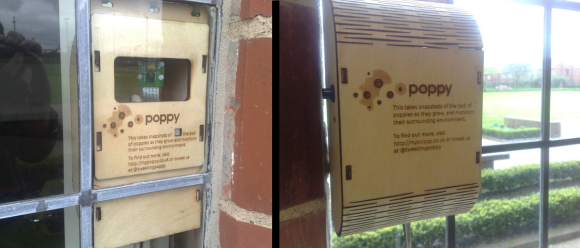
Nanigans CEO Ric Calvillo talks to a lot of ad-tech analysts. Every time he asks them what the biggest disruption in the advertising technology space is, they say RTB, or real-time bidding.
But that’s actually much smaller than another, much bigger phenomenon, one that potentially threatens the entire ad industry.
 “RTB is only $4-5 billion,” says Calvillo, referring to the exchanges that sell millions of ads per minute in hyper-efficient automated bidding mini-wars for real-time ad delivery via the web or mobile apps. “The online global ad market is about $100 billion … and between Google, Doubleclick, YouTube, and Facebook, direct-to-client ad sales via self-serve total about $20 billion.”
“RTB is only $4-5 billion,” says Calvillo, referring to the exchanges that sell millions of ads per minute in hyper-efficient automated bidding mini-wars for real-time ad delivery via the web or mobile apps. “The online global ad market is about $100 billion … and between Google, Doubleclick, YouTube, and Facebook, direct-to-client ad sales via self-serve total about $20 billion.”
“So 20 percent of the market has been sucked out of the ecosystem.”
The ecosystem Calvillo is talking about, of course, is the ad-reselling ecosystem, which is increasingly occupied by a sometimes-bewildering mix of third parties that are middle-men between advertisers and publishers: supply-side networks, demand-side networks, ad resellers, real-time exchanges, and hundreds of specialist companies occupying dozens of niches in the big market of creating demand and selling stuff.
That’s the market that Calvillo wants to disrupt, while also taking on ad giants like Facebook and Google. To say the least, it’s a tall order.
Advertising markup
The current complex ad ecosystem largely lives on the difference between what an ad costs at some publisher, and what you pay them.
 “The typical markup on media is 100 percent,” Calvillo told me, though in automated exchanges it is often less. “If they were really selling it for $20B, third parties would have made some of that … there’s at least $10B of extra margin that Google and Facebook has captured.”
“The typical markup on media is 100 percent,” Calvillo told me, though in automated exchanges it is often less. “If they were really selling it for $20B, third parties would have made some of that … there’s at least $10B of extra margin that Google and Facebook has captured.”
This is pretty much the way the advertising ecosystem has always worked, of course. Brands hired agencies to create campaigns, build creative, and buy ad placements in magazines, paper, radio, and TV. Agencies made money on the difference between what they bought ads for, and sold them.
That’s pretty old-school at this point — the internet has made many things more efficient, and ad buying is just one of them.
So why is the ad-tech ecosystem booming, with seemingly dozens of new companies popping up monthly?
Pay more, get more
One reason is that you might actually want to pay double for your ads, if you knew they were four times as effective.
 So ad-tech companies are investing millions in big data, trying to build predictive analytics that take what they know about you and your behavior and build algorithms for which ads are most likely to be welcome, topical, and timely. That helps them predict the value of an impression much better than a client who ventures solo onto Google Adwords or Facebook Ad Network, and potentially generates effectiveness that overrides efficiency.
So ad-tech companies are investing millions in big data, trying to build predictive analytics that take what they know about you and your behavior and build algorithms for which ads are most likely to be welcome, topical, and timely. That helps them predict the value of an impression much better than a client who ventures solo onto Google Adwords or Facebook Ad Network, and potentially generates effectiveness that overrides efficiency.
Companies like Nanigans process 250 million ad events daily, Calvillo said, so they have much better capability in judging where an advertisers’ money is best spent. In addition, since brands need to advertise at global scale, sending out millions of customized ads to users in different locales with different languages, customs, preferences, and buying habits, a partner who can manage billions of monthly impressions could be helpful.
Nanigans is doing all those things too.
But the boom in ad-tech companies has created another problem: everyone wants a cut. So an advertiser might find itself placing a bid to buy an ad on a demand-side platform which goes to an ad exchange that matches it up with a supply-side platform with the appropriate inventory which then actually finally places the ad on a publisher’s site. At each stage in the long process, you’re paying some percentage points extra, which over time ads up to a lot of extra cost.
So Calvillo has another ace up his sleeve, he hopes.
Ad platform as a service
Instead of the traditional model of buying and selling ad inventory for clients, Calvillo is re-directing Nanigans away from a Facebook-centric ad-management partner towards becoming a software-as-a-service ad company model. Call it ACaaS (ad company as a service), or APaaS, advertising platform as, yes, a service. It’s in part a response to the complexities and consequent cost of online advertising, and in part a response to the big boys of online publishing, like Google AdSense and Facebook Ad Network, going off the reservation and into the wider internet, where they are no longer selling their own inventory.
 “When Facebook and Google go off their own inventory, they act just like a network,” Calvillo said. “Then they add 32 percent mark-up between the SSP [supply-side] layer and the DSP [demand-side] layer. We think SaaS can disrupt that.”
“When Facebook and Google go off their own inventory, they act just like a network,” Calvillo said. “Then they add 32 percent mark-up between the SSP [supply-side] layer and the DSP [demand-side] layer. We think SaaS can disrupt that.”
In other words, Calvillo is seeing Facebook’s and Google’s efficiencies, and raising them another, while also reducing the number of layers between advertiser and publisher to one. The result could be to give every brand and advertiser all the advantages of the house: massive scale, hyper-efficiency, big-data-informed knowledge of people who they’re targeting ads at, and at-cost ad prices.
How?
By removing middlemen, of course. And by not working just for the advertisers, but also for the publishers who are currently selling their ads at wholesale for Google and Facebook and other ad companies to sell at retail, and losing 32-100 percent of the ultimate potential revenue.
“We could sell a SaaS contract for all these publishers … and you get billed by the publisher,” Calvillo said. “Our fee is nominal. That's a long-term play, so direct billing is critical … we don't want to have to pass the media dollars through the way the DSPs have.”
One network to rule them all?
The result looks pretty much like a supply-side platform, Calvillo agreed, but he argues that over time, these layers will collapse. Which would eliminate the modern middlemen of the ad-tech world: One network to rule them all, and in the end, bind them.
The results could be both more money in publisher’s pockets, and more ads that brands could buy.
“For display media, there's a nonlinear bid-to-volume curve,” Calvillo said. “If you have a big e-commerce site and you're paying [ad company] Criteo 40 percent markup … even with a SaaS fee if you can bid 30 percent higher, and make double your volume. That could be huge from a competitive standpoint.”
 There’s so much complexity in the market right now, Calvillo says, that people don’t know what they’re paying, they don’t know who they’re paying, and they don’t know what their ads actually cost before getting marked up at each stage in the long chain. Some clients who work with other platforms, he told me, have taken the trouble to find out how much extra ad networks were costing them, and the result was not pretty.
There’s so much complexity in the market right now, Calvillo says, that people don’t know what they’re paying, they don’t know who they’re paying, and they don’t know what their ads actually cost before getting marked up at each stage in the long chain. Some clients who work with other platforms, he told me, have taken the trouble to find out how much extra ad networks were costing them, and the result was not pretty.
Ultimately, such a system would conceivably bring more transparency to the market. At the cost of significant amounts of business for the current internet giants, of course, who will have something to say about the matter.
“The question is: will Google or Facebook own everything?” Calvillo asks.
His goal is to ensure that they don’t.
His challenge, of course, is not only that they are already well on their way to doing so, even a massive direct-to-publisher network cannot ignore the huge audiences that they have. And that this kind of an approach is barely even a market as yet. And, perhaps most importantly, that everyone else, including Google and Facebook, would also like to sit in that sweet spot between advertiser and publisher, collecting a piece of all the action, all the time.
Use a free or cheap marketing automation system? Tell us what's great about it (and not so great), and we'll share survey data from everyone else with you.
Facebook is the world's largest social network, with over 1.15 billion monthly active users. Facebook was founded by Mark Zuckerberg in February 2004, initially as an exclusive network for Harvard students. It was a huge hit: in 2 w... read more »
Google's innovative search technologies connect millions of people around the world with information every day. Founded in 1998 by Stanford Ph.D. students Larry Page and Sergey Brin, Google today is a top web property in all major glob... read more »
Nanigans is transforming how marketers acquire and remarket to customers. By harnessing the power of lifetime value to inform more intelligent and efficient media buying, the company is moving the industry away from buying on a cost-pe... read more »

 A box containing sensors is installed in the flower bed. The intent of this project was not to have the Raspberry Pi spit out hard factual data regarding soil moistness, temperature and ambient noise, but to instead take that data from the sensors and send out a story-like narrative that makes the communication feel more personal. To receive these comments from the poppies, you can follow them on Twitter: @tweetingpoppy.
A box containing sensors is installed in the flower bed. The intent of this project was not to have the Raspberry Pi spit out hard factual data regarding soil moistness, temperature and ambient noise, but to instead take that data from the sensors and send out a story-like narrative that makes the communication feel more personal. To receive these comments from the poppies, you can follow them on Twitter: @tweetingpoppy.



